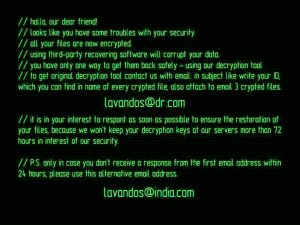 If .Wallet File Virus (Dharma Ransomware) has infected your PC this article aims to help you remove the Dharma virus and try to restore your encrypted files with added .wallet file extension.
If .Wallet File Virus (Dharma Ransomware) has infected your PC this article aims to help you remove the Dharma virus and try to restore your encrypted files with added .wallet file extension.
Amagnus@india.com is one of the e-mails the victims of the latest version of the Dharma ransomware (also known as the .Wallet virus), see after their computers have been infected by the malware. This type of ransomware infection aims to encrypt data via the AES algorithm on the computers it infects with the one and only purpose to extort the victim for a ransom payoff in BitCoin. In case you’ve become a victim of the Dharma virus it is advisable to read this material to help you remove the malware safely and try to restore the files encrypted by it.

Threat Summary
| Name |
.Wallet File exe |
| Type | Ransomware |
| Short Description | .Wallet virus, also calling itself Dharma encrypts user files and leaves as contact e-mail addresses to contact the criminals behind it and pay the ransom fee. |
| Symptoms | Changes file extension of encrypted files to .wallet. Changes wallpaper to one with ransom instructions that have ransom e-mail. |
| Distribution Method | Via an Exploit kit, Dll file attack, malicious JavaScript or a drive-by download of the malware itself in an obfuscated manner. |
| Detection Tool |
See If Your System Has Been Affected by malware
Download
Malware Removal Tool
|
| User Experience | Join our forum to Discuss .Wallet File exe. |
| Data Recovery Tool | Windows Data Recovery by Stellar Phoenix Notice! This product scans your drive sectors to recover lost files and it may not recover 100% of the encrypted files, but only few of them, depending on the situation and whether or not you have reformatted your drive. |
If you have been infected by the .wallet file virus, chances are you still haven’t succeeded in the file restoration process. This is because no official decrypter has been released for this version of Dharma ransomware yet, but the good news is a .wallet file decrypter may be available soon. Security researchers were able to code and release a decrypter for .dharma encrypted files. Both .dharma and .wallet file viruses ar part of the same ransomware family.
The Dharma ransomware uncovered to be part of the CrySis ransomware family, .wallet file virus inclusive, has proven to be a real menace to international users. The .wallet file virus has taken thousands of files hostage, leaving victims with no other option but to pray for a miracle (such as a free decrypter) or to pay the demanded ransom. A third option is also available – using an alternative data recovery program which may be able to restore at least some of your encrypted files. For more information, scroll down to the end of the article where you can find further instructions on using such a program.
While security researchers are still working on a .wallet file decrypter we kindly remind you to improve your data hygiene and to continuously back up all of your important data so that ransomware infections won’t have any impact on you.

Update May 2017 – New Data Recovery Method
Update May 2017. Our research indicates that this .wallet file virus continues to infect users in May 2017. In addition, there is a new ransomware infection, which uses the .wallet file extension. This new .Wallet infection encrypts the files by using the AES and RSA encryption algorithm. The ransom note is named #_Restoring_files_#.txt.
It has been brought to our attention that victims of the latest Dharma .wallet ransomware infection variants have managed to restore a very high percentage (over 90%) of their files using a very unique method – converting files into virtual drives and then using partition recovery option on data recovery programs. This method takes advantage of the converting the files into a .VHD file type which is a virtual drive. Since there are new data recovery programs specifically designed to recover partitions, one approach is to restore files encyrpted by Dharma ransomware is to convert the encrypted files into .VHD files and then try to recover them using partition recovery software. Since the algorithm that encrypts files actually alters only a small portion of the file, you have a much higher chance of recovering the files if you change them into .VHD type.
The methods have been reported to not be a full guarantee to recover all the files, but if you haven’t reinstalled your operating system yet, we advise you to follow them. But first, make sure to remove Dharma’s malicious files from the instructions at the bottom of these article. Here are the instructions:

How Dharma .Wallet File Infects
To encrypt the files on compromised computer by infecting it, the criminals behind the .Wallet file virus may undertake different approaches, varying from messages with links or attachments by suspicious users who send you friend requests on Skype, to suspicious e-mails sent to you, that resemble a bank or a legitimate service, like PayPal, Amazon or E-bay, for example.
Such messages may contain malicious files or scripts embedded in URLs that are masked as legitimate documents or even buttons. Opening those will lead to a malicious script causing an infection of Dharma ransomware and the download of it’s malicious payload under different names.
The infection file may have different tools embedded to cause a successful infection, such as:
- Obfuscators to hide the infection.
- An exploit kit to connect to criminal servers undetected and cause an infection via a bug.
- File joiners to combine malicious code with legitimate files.
- New URL’s that haven’t been flagged yet to cause a successful infection.
- Malicious scripts.
- Spamming affiliates or spamming software to spread the infection file/URL.

.Wallet File Virus – More Information
About the Buddhist religion, the word Dharma means to act accordingly a natural order, but it may also mean a phenomenon of some sort. However, unlike the harmony Dharma preaches, there is nothing in harmony about it. In fact, it is the opposite, because this virus aims to wreak havoc on your computer, once you are infected.
The first task of Dharma ransomware after infecting your computer is to make several different objects in the Windows Registry. These so-called values might make the .Wallet ransomware to run on Windows startup and automatically begin to encrypt files. The main registry keys that are targeted are the Run and RunOnce keys in the Windows Registry.
Also, Dharma ransomware may change the wallpaper and drop a ransom note to make sure the victim of the virus knowns it’s presence on the computer. The ransom note of the virus may be the same like it’s older version:
→ “//hallo, our dear friend!
//looks like you have some troubles with your security.
//all your files are now encrypted.
//using third-party recovering software will corrupt your data.
//you have only one way to get them back safely – using our decryption tool.
//to get original decryption tool contact us with email. In subject like write your ID, which you can find in name of every crypted file, also attach to email 3 crypted files.
lavandos@dr.com
//it is in your interest to respond as soon as pissible to ensure the restoration of your files because we won’t keep your decryption keys at our servers more than 72 hours in interest of our security.
//P.S. only in case you don’t receive a response from the first email address within 24 hours, please use this alternative email address.
amagnus@india.com”
Regarding file encryption, Dharma ransomware may attack the most widely used type of files, for example the following file extensions:
→ “PNG .PSD .PSPIMAGE .TGA .THM .TIF .TIFF .YUV .AI .EPS .PS .SVG .INDD .PCT .PDF .XLR .XLS .XLSX .ACCDB .DB .DBF .MDB .PDB .SQL .APK .APP .BAT .CGI .COM .EXE .GADGET .JAR .PIF .WSF .DEM .GAM .NES .ROM .SAV CAD Files .DWG .DXF GIS Files .GPX .KML .KMZ .ASP .ASPX .CER .CFM .CSR .CSS .HTM .HTML .JS .JSP .PHP .RSS .XHTML. DOC .DOCX .LOG .MSG .ODT .PAGES .RTF .TEX .TXT .WPD .WPS .CSV .DAT .GED .KEY .KEYCHAIN .PPS .PPT .PPTX ..INI .PRF Encoded Files .HQX .MIM .UUE .7Z .CBR .DEB .GZ .PKG .RAR .RPM .SITX .TAR.GZ .ZIP .ZIPX .BIN .CUE .DMG .ISO .MDF .TOAST .VCD SDF .TAR .TAX2014 .TAX2015 .VCF .XML Audio Files .AIF .IFF .M3U .M4A .MID .MP3 .MPA .WAV .WMA Video Files .3G2 .3GP .ASF .AVI .FLV .M4V .MOV .MP4 .MPG .RM .SRT .SWF .VOB .WMV 3D .3DM .3DS .MAX .OBJ R.BMP .DDS .GIF .JPG .CRX .PLUGIN .FNT .FON .OTF .TTF .CAB .CPL .CUR .DESKTHEMEPACK .DLL .DMP .DRV .ICNS .ICO .LNK .SYS .CFG”Source:fileinfo.com
Furthermore, this particular Dharma version also uses a very similar file format to encrypt the files. Besides using a strong AES algorithm to make the files no longer openable, it makes the files look similar to the image below:
After the encryption process is complete, bytes of the files’ code is altered, and they are no longer accessible.

Remove .Wallet Virus from Your Computer and Try to Restore Encrypted Files
Viruses similar to Dharma ransomware have previously proven to be more and more difficult to decrypt after their newer versions come out with patches to prevent malware researchers to decipher the files.
But despite that, trying to restore the files and removing Dharma is strongly recommended by experts. This is we advise you to perform the following steps in case you have become a victim of Dharma’s .wallet variant.
1. Backup your files, even though they are encrypted, because a decryptor may be released, which, if happens we will make sure to post an update on this web page.
2. Remove Dharma ransomware by following the specific instructions created below.
3. Trying to restore copies of the encrypted files by following the alternative methods suggested in step “2. Restore files encrypted by .Wallet Virus”.
- Step 1
- Step 2
- Step 3
- Step 4
- Step 5
Step 1: Scan for .Wallet File exe with SpyHunter Anti-Malware Tool



Ransomware Automatic Removal - Video Guide
Step 2: Uninstall .Wallet File exe and related malware from Windows
Here is a method in few easy steps that should be able to uninstall most programs. No matter if you are using Windows 10, 8, 7, Vista or XP, those steps will get the job done. Dragging the program or its folder to the recycle bin can be a very bad decision. If you do that, bits and pieces of the program are left behind, and that can lead to unstable work of your PC, errors with the file type associations and other unpleasant activities. The proper way to get a program off your computer is to Uninstall it. To do that:


 Follow the instructions above and you will successfully delete most unwanted and malicious programs.
Follow the instructions above and you will successfully delete most unwanted and malicious programs.
Step 3: Clean any registries, created by .Wallet File exe on your computer.
The usually targeted registries of Windows machines are the following:
- HKEY_LOCAL_MACHINE\Software\Microsoft\Windows\CurrentVersion\Run
- HKEY_CURRENT_USER\Software\Microsoft\Windows\CurrentVersion\Run
- HKEY_LOCAL_MACHINE\Software\Microsoft\Windows\CurrentVersion\RunOnce
- HKEY_CURRENT_USER\Software\Microsoft\Windows\CurrentVersion\RunOnce
You can access them by opening the Windows registry editor and deleting any values, created by .Wallet File exe there. This can happen by following the steps underneath:


 Tip: To find a virus-created value, you can right-click on it and click "Modify" to see which file it is set to run. If this is the virus file location, remove the value.
Tip: To find a virus-created value, you can right-click on it and click "Modify" to see which file it is set to run. If this is the virus file location, remove the value.
Before starting "Step 4", please boot back into Normal mode, in case you are currently in Safe Mode.
This will enable you to install and use SpyHunter 5 successfully.
Step 4: Boot Your PC In Safe Mode to isolate and remove .Wallet File exe





Step 5: Try to Restore Files Encrypted by .Wallet File exe.
Method 1: Use STOP Decrypter by Emsisoft.
Not all variants of this ransomware can be decrypted for free, but we have added the decryptor used by researchers that is often updated with the variants which become eventually decrypted. You can try and decrypt your files using the instructions below, but if they do not work, then unfortunately your variant of the ransomware virus is not decryptable.
Follow the instructions below to use the Emsisoft decrypter and decrypt your files for free. You can download the Emsisoft decryption tool linked here and then follow the steps provided below:
1 Right-click on the decrypter and click on Run as Administrator as shown below:

2. Agree with the license terms:

3. Click on "Add Folder" and then add the folders where you want files decrypted as shown underneath:

4. Click on "Decrypt" and wait for your files to be decoded.

Note: Credit for the decryptor goes to Emsisoft researchers who have made the breakthrough with this virus.
Method 2: Use data recovery software
Ransomware infections and .Wallet File exe aim to encrypt your files using an encryption algorithm which may be very difficult to decrypt. This is why we have suggested a data recovery method that may help you go around direct decryption and try to restore your files. Bear in mind that this method may not be 100% effective but may also help you a little or a lot in different situations.
Simply click on the link and on the website menus on the top, choose Data Recovery - Data Recovery Wizard for Windows or Mac (depending on your OS), and then download and run the tool.
.Wallet File exe-FAQ
What is .Wallet File exe Ransomware?
.Wallet File exe is a ransomware infection - the malicious software that enters your computer silently and blocks either access to the computer itself or encrypt your files.
Many ransomware viruses use sophisticated encryption algorithms to make your files inaccessible. The goal of ransomware infections is to demand that you pay a ransom payment to get access to your files back.
What Does .Wallet File exe Ransomware Do?
Ransomware in general is a malicious software that is designed to block access to your computer or files until a ransom is paid.
Ransomware viruses can also damage your system, corrupt data and delete files, resulting in the permanent loss of important files.
How Does .Wallet File exe Infect?
Via several ways..Wallet File exe Ransomware infects computers by being sent via phishing emails, containing virus attachment. This attachment is usually masked as an important document, like an invoice, bank document or even a plane ticket and it looks very convincing to users.
Another way you may become a victim of .Wallet File exe is if you download a fake installer, crack or patch from a low reputation website or if you click on a virus link. Many users report getting a ransomware infection by downloading torrents.
How to Open ..Wallet File exe files?
You can't without a decryptor. At this point, the ..Wallet File exe files are encrypted. You can only open them once they are decrypted using a specific decryption key for the particular algorithm.
What to Do If a Decryptor Does Not Work?
Do not panic, and backup the files. If a decryptor did not decrypt your ..Wallet File exe files successfully, then do not despair, because this virus is still new.
Can I Restore "..Wallet File exe" Files?
Yes, sometimes files can be restored. We have suggested several file recovery methods that could work if you want to restore ..Wallet File exe files.
These methods are in no way 100% guaranteed that you will be able to get your files back. But if you have a backup, your chances of success are much greater.
How To Get Rid of .Wallet File exe Virus?
The safest way and the most efficient one for the removal of this ransomware infection is the use a professional anti-malware program.
It will scan for and locate .Wallet File exe ransomware and then remove it without causing any additional harm to your important ..Wallet File exe files.
Can I Report Ransomware to Authorities?
In case your computer got infected with a ransomware infection, you can report it to the local Police departments. It can help authorities worldwide track and determine the perpetrators behind the virus that has infected your computer.
Below, we have prepared a list with government websites, where you can file a report in case you are a victim of a cybercrime:
Cyber-security authorities, responsible for handling ransomware attack reports in different regions all over the world:
Germany - Offizielles Portal der deutschen Polizei
United States - IC3 Internet Crime Complaint Centre
United Kingdom - Action Fraud Police
France - Ministère de l'Intérieur
Italy - Polizia Di Stato
Spain - Policía Nacional
Netherlands - Politie
Poland - Policja
Portugal - Polícia Judiciária
Greece - Cyber Crime Unit (Hellenic Police)
India - Mumbai Police - CyberCrime Investigation Cell
Australia - Australian High Tech Crime Center
Reports may be responded to in different timeframes, depending on your local authorities.
Can You Stop Ransomware from Encrypting Your Files?
Yes, you can prevent ransomware. The best way to do this is to ensure your computer system is updated with the latest security patches, use a reputable anti-malware program and firewall, backup your important files frequently, and avoid clicking on malicious links or downloading unknown files.
Can .Wallet File exe Ransomware Steal Your Data?
Yes, in most cases ransomware will steal your information. It is a form of malware that steals data from a user's computer, encrypts it, and then demands a ransom in order to decrypt it.
In many cases, the malware authors or attackers will threaten to delete the data or publish it online unless the ransom is paid.
Can Ransomware Infect WiFi?
Yes, ransomware can infect WiFi networks, as malicious actors can use it to gain control of the network, steal confidential data, and lock out users. If a ransomware attack is successful, it could lead to a loss of service and/or data, and in some cases, financial losses.
Should I Pay Ransomware?
No, you should not pay ransomware extortionists. Paying them only encourages criminals and does not guarantee that the files or data will be restored. The better approach is to have a secure backup of important data and be vigilant about security in the first place.
What Happens If I Don't Pay Ransom?
If you don't pay the ransom, the hackers may still have access to your computer, data, or files and may continue to threaten to expose or delete them, or even use them to commit cybercrimes. In some cases, they may even continue to demand additional ransom payments.
Can a Ransomware Attack Be Detected?
Yes, ransomware can be detected. Anti-malware software and other advanced security tools can detect ransomware and alert the user when it is present on a machine.
It is important to stay up-to-date on the latest security measures and to keep security software updated to ensure ransomware can be detected and prevented.
Do Ransomware Criminals Get Caught?
Yes, ransomware criminals do get caught. Law enforcement agencies, such as the FBI, Interpol and others have been successful in tracking down and prosecuting ransomware criminals in the US and other countries. As ransomware threats continue to increase, so does the enforcement activity.
About the .Wallet File exe Research
The content we publish on SensorsTechForum.com, this .Wallet File exe how-to removal guide included, is the outcome of extensive research, hard work and our team’s devotion to help you remove the specific malware and restore your encrypted files.
How did we conduct the research on this ransomware?
Our research is based on an independent investigation. We are in contact with independent security researchers, and as such, we receive daily updates on the latest malware and ransomware definitions.
Furthermore, the research behind the .Wallet File exe ransomware threat is backed with VirusTotal and the NoMoreRansom project.
To better understand the ransomware threat, please refer to the following articles which provide knowledgeable details.
As a site that has been dedicated to providing free removal instructions for ransomware and malware since 2014, SensorsTechForum’s recommendation is to only pay attention to trustworthy sources.
How to recognize trustworthy sources:
- Always check "About Us" web page.
- Profile of the content creator.
- Make sure that real people are behind the site and not fake names and profiles.
- Verify Facebook, LinkedIn and Twitter personal profiles.



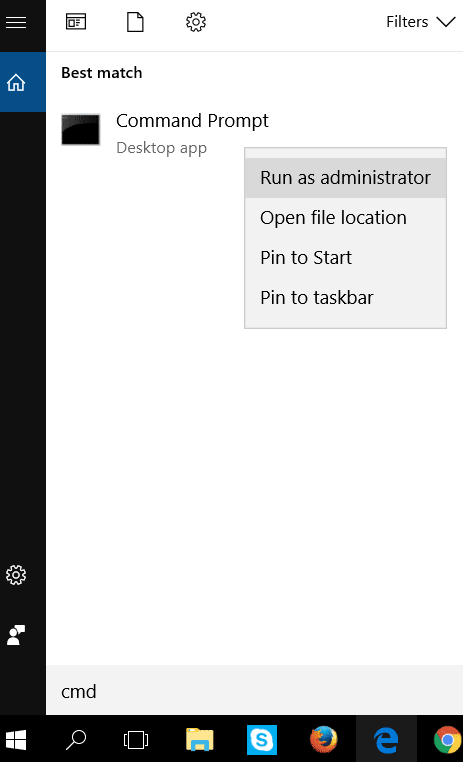


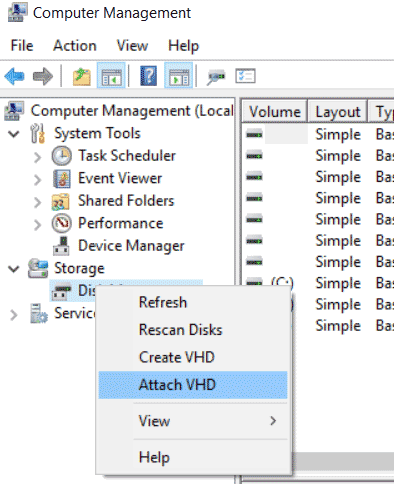
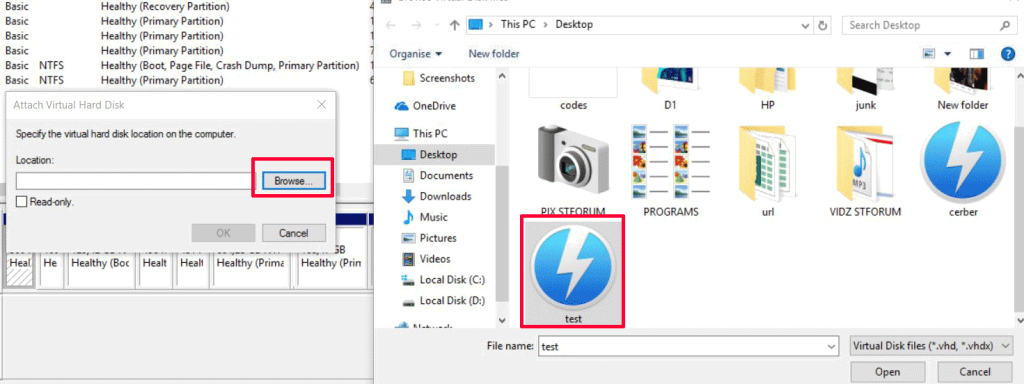
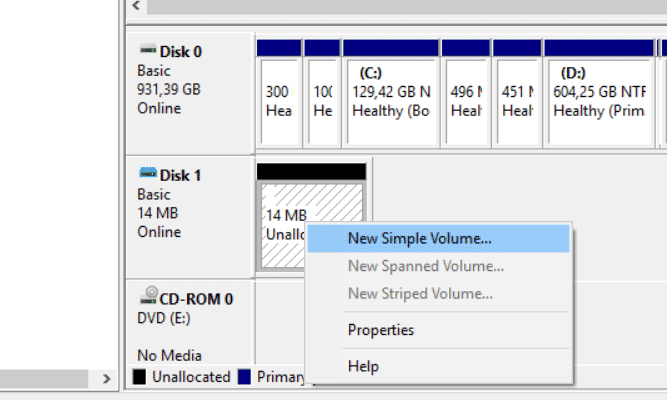
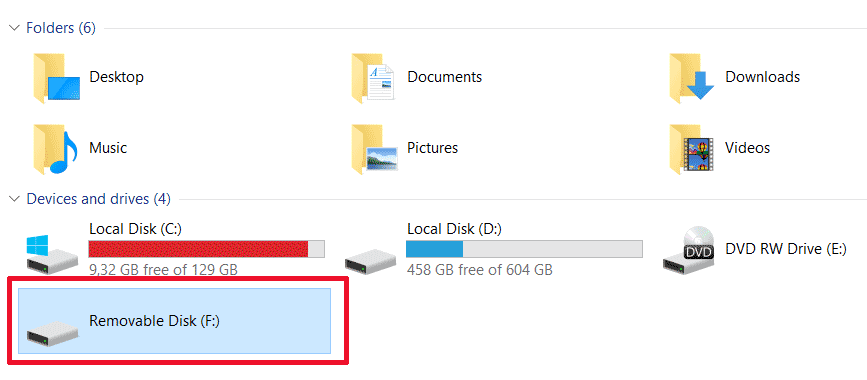


I might be able to help decrypt the .wallet if you would like to send over a sample I can analyze it. Send encrypted file and same one from a backup if possible to ransomsample@outlook.com and I will take a look.
I might have a solution for .wallet
care to share :P
i bought the files to decrypt and they worked but i need someone to take these files and make a solution out of it
hi mr jhon, i have also been attack by .wallet, can you help me?
Email me and i will try and assist RTSGhost@outlook.com
What type of solution? What software did you use?
uploads.disquscdn.com/images/d9d9cea90d28a726f0cdf13b405210e484aa11caacb1ba41502bc83ba6e92bcb.jpg
What a crock!! The file has to be 12mb at least – The new text document example shown is over 12MB – I’d suggest it was a VHD to start with. Don’t waste your time